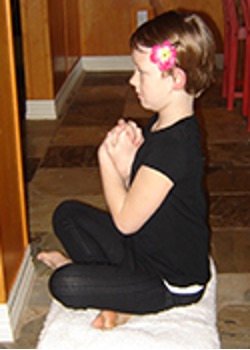Strong Sitting: Brain Based Behavior Interventions
Oct 30, 2022
A Powerful Tool
This amazingly powerful exercise makes such a big difference! I am so excited about all the new brain research and how it is clarifying the healing power of this fantastic, yet simple exercise. We have been using this technique with tremendous success for many years to help emotionally disturbed children! It makes a big difference for children with PTSD, RAD, ODD and OCD. Let me share with you what we are finding.
What is “strong sitting or criss-cross”?
It is an exercise that helps the brain to shift gears. It is a time to think, dream, plan, or pray. The correct body position is: sitting on a comfortable mat or rug, cross-legged with the back straight, hands folded in a comfortable spot (resting near ankles for most). Arms are relaxed, and head and neck are straight and facing forward. The chest/lung area must be ‘open’ (not ‘caved in’), to allow oxygen in for the brain to function effectively. When this position is maintained – with no muscle movement – it allows the brain to shift and function freely. A spot with few distractions is best. I like to put a post-it note on the wall with a positive affirmation for them to focus on.

What does it do?
Strong Sitting gives the brain an opportunity to shift in the most successful position. Children who have been traumatized have the wiring in their brain more developed in the inner core (R Complex). This is a defense or survival mode. In other words, ‘fight’, i.e. arguing, defiance, negative behavior; or ‘flight’, i.e. running away; or ‘freeze’, i.e. shutting down. This inner core is where children with RAD are most comfortable because it is the most highly developed section. They seek negative attention and criticism because it puts them in their comfort zone.
The parts of the mind that are less developed with RAD are the Limbic system, i.e. love and attachment; and the Neo-Cortex i.e. logic, reasoning–school work. In order to do Strong Sitting correctly – sitting still, straight and quiet – they must shift gears in their brain to the Neo-cortex by going through the Limbic system. It stimulates both of these parts of the brain! Each minute they spend doing it correctly exercises the logic and/or love parts of the mind. Brain power!
How long should it last?
We have the children sit one minute for every year of life. For example, a five-year-old would sit for five minutes, a ten-year-old for ten minutes. We start with 30 seconds of still straight and silent, and build up. Positive input helps the brain shift. Keep it easy so you have ample opportunity to give positive feedback and encouragement!
How often is it done?
During the initial healing phase we have found that two or three times a day is the most beneficial. We don’t have them do it for long periods because it is difficult for some to sit still and quiet. Several short sessions are better than one long one, because it gives more opportunity to shift gears from one part of the brain to the next I like to have children do their strong sitting exercise while I am preparing meals. The smell of cooking food is relaxing and helps them succeed. We have added this powerful tool to our Brain Based Behavior Interventions (3BI). It is the best way to correct disrespectful, defiant or destructive behavior!
What strong sitting is NOT
It is not a punishment! It is not the child paying, with their time, for something they have done wrong! It is not to push the child away or isolate them. They must be where you can see them in order to encourage and cheer their efforts. It is a gift of quiet time to regroup, relax and heal.
If you would like to know how to correctly use the Brain Based Behavior Interventions check out this webinar I did showing you exactly how! Find it Here.
Cut the chaos! Find out how Nancy did it the easy way!
Join our mailing list to receive the latest news and get this bonus booklet.
I know you are busy!! I won't overload your inbox!
We hate SPAM. We will never sell your information, for any reason.

